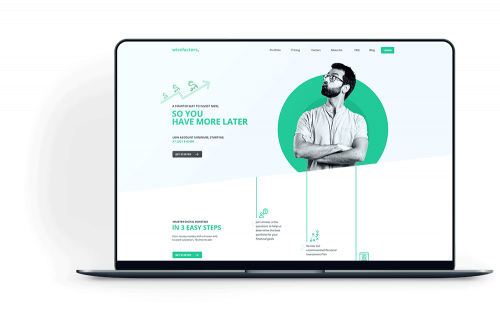Boost Involvement With Innovative Internet Site Design Solutions
A thoughtfully crafted user experience, underpinned by tactical aesthetic design and interactive aspects, can considerably boost user involvement. By discovering various methods such as responsive design and tailored content, organizations can create a platform that not just astounds users but additionally cultivates long-lasting commitment.

Comprehending Individual Experience
Recognizing individual experience (UX) is vital for creating effective internet site design services, as it directly affects exactly how customers communicate with electronic systems. An extensive UX strategy encompasses numerous components, including usability, access, and user contentment, all of which add to the overall effectiveness of an internet site.
To start with, functionality focuses on how quickly customers can browse and discover the details they seek - website design. A well-structured layout, intuitive navigating, and clear contact us to action are fundamental parts that improve use. Availability ensures that all individuals, including those with handicaps, can effectively connect with the web site. This includes designing content that is compliant with accessibility criteria and can be conveniently accessed utilizing assistive technologies.
Additionally, understanding individual identities is essential for customizing the experience to satisfy specific target market needs. By conducting individual research and screening, designers can collect insights that notify layout choices, ensuring the website not only satisfies aesthetic goals however likewise satisfies practical requirements. Inevitably, a thoughtful approach to UX layout fosters interaction, urges retention, and improves overall individual complete satisfaction, which are crucial for the success of any digital platform.
Visual Layout Strategies
Integrating reliable visual layout methods is crucial for recording customer interest and enhancing the general customer experience on a website. A well-thought-out aesthetic hierarchy guides customers via the material, permitting them to quickly browse and take in info. This can be attained through the strategic use of typography, color design, and spacing, which collectively create a natural and engaging layout.
Color plays a crucial duty in stimulating emotions and establishing brand name identification. Utilizing a balanced color combination that lines up with the brand name's ethos can foster familiarity and trust. Furthermore, integrating high-grade pictures and graphics enhances visual charm and can considerably enhance individual interaction.
Whitespace, typically forgot, is equally vital as it permits web content to breathe and stops overwhelming users with clutter. It promotes much easier reading and understanding, causing a much more delightful surfing experience.
Last but not least, consistency in layout elements-- such as switch styles, fonts, and symbols-- makes sure a seamless customer journey, enhancing the brand name's expertise. By purposefully applying these aesthetic design strategies, web sites can not only bring in site visitors yet additionally encourage them to stay longer and involve even more deeply with the material.
Interactive Aspects for Involvement
Engaging customers successfully commonly hinges on the implementation of interactive elements that invite participation and foster a dynamic browsing experience. These components, consisting of tests, surveys, and interactive infographics, motivate customers to proactively take part rather than passively take in material. By incorporating such functions, web sites can not only catch interest but likewise improve customer retention.

Gamification is one more effective technique. Integrating game-like components, such as accomplishments or rewards for completing jobs, can change ordinary interactions right into delightful experiences. This strategy not just enhances involvement however likewise encourages customers to return, creating a loyal target market.
Additionally, interactive components can facilitate social sharing, intensifying a web site's reach. Features like comment sections, share buttons, and user-generated web content locations foster area communication, transforming site visitors right into active participants. website design. Ultimately, the tactical use interactive elements is vital for producing a appealing and compelling internet site that reverberates with customers
Adaptive and responsive Design
A properly designed site has to focus on adaptive and receptive design to ensure ideal customer experiences across a selection of gadgets and screen dimensions. Receptive style employs fluid grids and adaptable pictures, enabling the format to instantly change based on the visitor's display dimension. This method makes certain that individuals can conveniently connect and navigate with the material, no matter whether they are making use of a mobile phone, desktop, or tablet computer .
In comparison, adaptive style utilizes predefined formats that are customized to specific tool groups. This indicates that the site discovers the kind of device being utilized and serves the ideal design, which can improve packing times and maximize the display of necessary aspects. While both techniques aim to improve use, receptive layout is usually preferred for its fluidity and smooth change in between tools.
Incorporating flexible and receptive style not only enhances customer fulfillment yet likewise positively influences online search engine positions. Internet search engine prioritize mobile-friendly websites, hence enhancing visibility and attracting more visitors. Investing in these design strategies is vital for organizations looking to engage their target market properly and maintain an affordable edge in today's digital landscape. website design.
Studying Customer Responses and Data
Customer responses and data evaluation are essential elements of efficient website layout, as they supply valuable insights into customer habits and preferences. By systematically gathering and taking a look at customer feedback via surveys, functionality testing, and analytics tools, designers can recognize pain points and locations for renovation. This data-driven method makes it possible for organizations to tweak their website components, ensuring that the user experience straightens with target market assumptions.
Assessing metrics such as bounce rates, time on page, and click-through rates provides a find here quantitative perspective on individual interaction. These metrics help designers discern which web content reverberates and which locations may require optimization. A/B screening can be utilized to evaluate variants in layout, allowing designers to make educated decisions based on customer communications.
Integrating individual responses not only improves website functionality but additionally fosters a sense of community and trust. Engaging with individuals via comments loops cultivates loyalty and encourages repeat check outs. Eventually, leveraging user responses and information evaluation is essential to producing a vibrant, user-centered internet site that adjusts to evolving individual demands and choices, thus driving higher interaction and complete satisfaction.
Final Thought

An attentively crafted individual experience, underpinned by critical visual style and interactive elements, can considerably boost user involvement.Integrating efficient visual layout methods is vital for catching user attention and enhancing the general user experience on a website.Customer comments and data evaluation are essential elements of efficient internet site layout, as they give useful understandings read review right into user behavior and preferences. Eventually, leveraging customer feedback and data analysis is indispensable to creating a vibrant, user-centered web site that adjusts to evolving individual requirements and choices, thus driving higher engagement and satisfaction.
In verdict, innovative web site style solutions dramatically improve customer involvement by focusing on customer experience, utilizing efficient visual strategies, and incorporating interactive components.